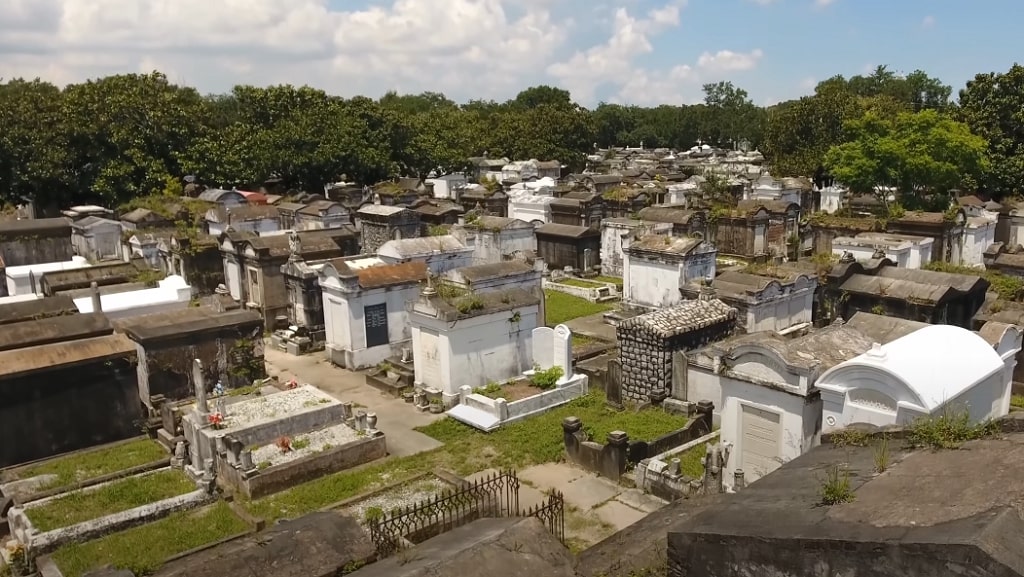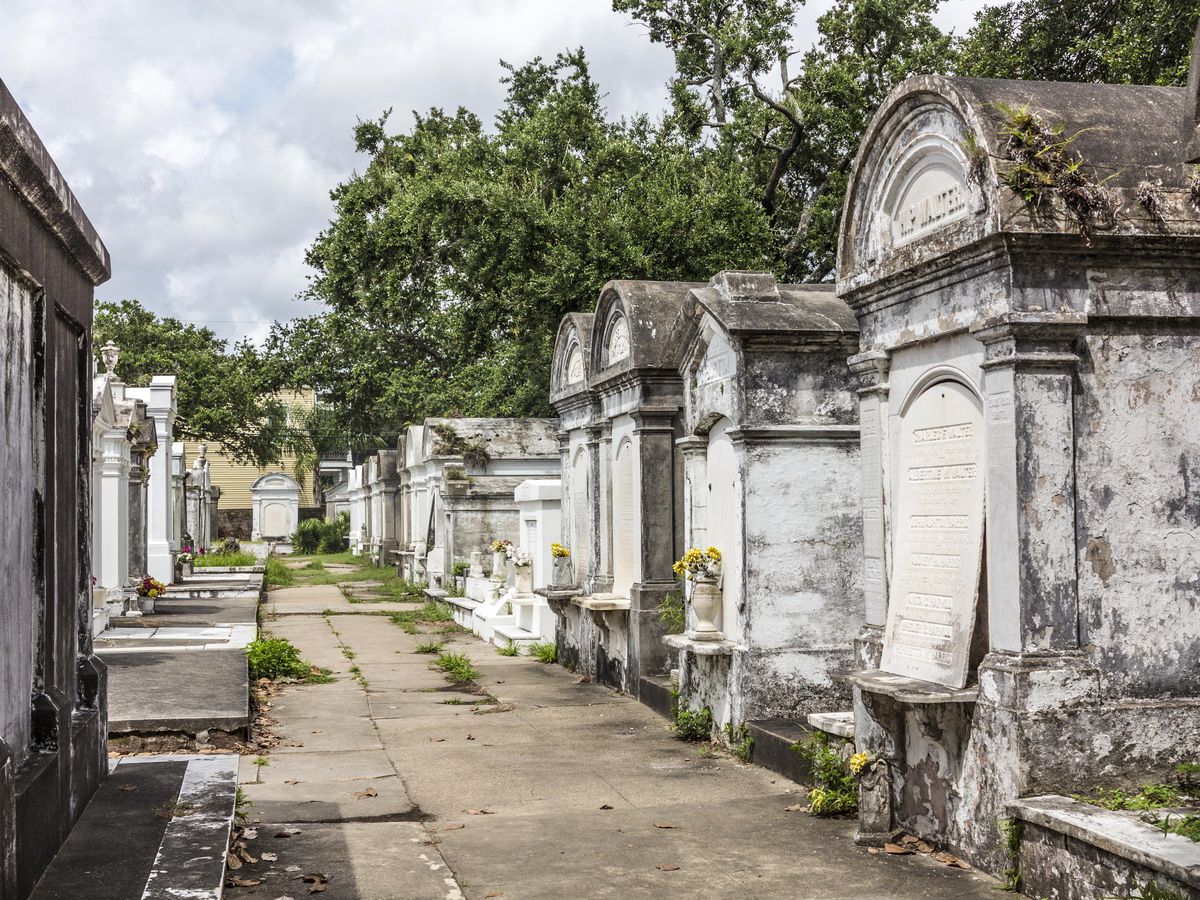New Orleans cemeteries are known for their historical significance and unique design, yet safety concerns have made some wary of visiting. These concerns stem from a combination of real incidents and practical issues. Some cemeteries are located in isolated areas, making visitors vulnerable to theft or harm. Reports of individuals exploiting the privacy of these spaces to engage in illegal activities, such as vandalism or trespassing, add to the risks.
Understanding the dangers involves recognizing both the physical layout of the cemeteries and the challenges the city faces in maintaining these historic sites. For those exploring these spaces, awareness and caution are key to ensuring a safe and respectful visit.
Reasons New Orleans Cemeteries Are Different
New Orleans cemeteries are famous for their unique above-ground tombs, shaped by both environmental challenges and cultural influences. These burial practices stand apart from those in other parts of the United States and are deeply tied to the city’s identity.
Key Factors That Make These Cemeteries Unique:

1. Geographical Challenges
The high water table in New Orleans made traditional underground burials nearly impossible. Coffins buried in the ground often floated to the surface during floods, leading to the adoption of above-ground tombs.
2. Cultural Influences
Burial practices were influenced by Spanish and French traditions, blending with Creole and African customs. This cultural melting pot created distinctive tomb designs, from simple brick structures to elaborate mausoleums.
3. Historical Significance
Many cemeteries house notable figures, including Homer Plessy, a civil rights pioneer, and Marie Laveau, a famed Voodoo priestess. These cemeteries serve as both sacred spaces and living records of the city’s past.
Additional Insights

- Tombs as Family Vaults: Above-ground tombs were designed to hold multiple generations. Decomposed remains were moved to a lower compartment, allowing new burials to occur within the same structure.
- Evolving Designs Over Time: Early tombs were simple, often made of brick or plaster, but later designs incorporated ornate features inspired by Gothic, Baroque, and Neoclassical styles.
- Community Burial Practices: Societies like the Firemen’s Charitable and Benevolent Organization built shared tombs for their members, providing affordable burial options while strengthening community ties.
Reported Crimes in Cemetery Areas
New Orleans cemeteries are well-known for their historical and cultural importance, but they have also been the sites of criminal activity. While these spaces attract countless visitors eager to learn about the city’s past, some cemeteries present risks due to their isolated locations and limited security measures.
Reports of crimes in these areas highlight the need for caution when exploring these historic landmarks.
Types of Crimes Reported in New Orleans Cemeteries:
- Muggings and Theft: Criminals have exploited the quiet, secluded nature of cemeteries to target tourists. Reports indicate that individuals have hidden behind tombs to rob unsuspecting visitors. While these incidents are less frequent in well-monitored cemeteries, they remain a concern in others.
- Vandalism and Damage: Historic tombs, including famous sites like Marie Laveau’s tomb in St. Louis #1, have been repeatedly vandalized. Unauthorized markings, such as the widespread “XXX” myth associated with Voodoo traditions, and physical damage to tombs are ongoing problems.
- Trespassing and Illegal Activities: Some cemeteries have been accessed after hours for unauthorized purposes. These acts not only compromise visitor safety but also contribute to the degradation of these historic spaces.
- Exploitation by Unofficial Guides: There have been reports of individuals charging tourists for entry or unauthorized tours, taking advantage of the popularity of cemeteries like St. Louis #1.
Real Incidents That Highlight Safety Concerns:
- Damage to Iconic Tombs: High-profile cases of vandalism include the painting of a tomb in St. Louis #1 and physical damage to tombs caused by unauthorized entries. These incidents have drawn attention to the lack of sufficient preservation efforts.
- Theft from Visitors: Some tourists have reported theft while navigating less crowded cemeteries, particularly those with limited visibility from public areas.
How Isolation Can Lead to Real Dangers
The isolated design of many New Orleans cemeteries, combined with their quiet surroundings, has made some of these areas hotspots for specific safety issues. High walls, dense layouts, and limited public visibility create conditions where crime or discomfort can occur.
- Unmonitored Spaces: Cemeteries with high walls and overgrown sections, like Greenwood Cemetery, have reported cases where visitors felt unsafe due to the lack of staff or nearby activity.
- Slow Response Times: Emergencies that occur in secluded parts of cemeteries, such as health issues or altercations, often face delays in assistance due to the layout and remoteness of the area.
- Areas Targeted by Criminals: Reports include individuals hiding behind tombs in less-traveled sections to commit thefts or intimidate tourists. These incidents have led to stricter access policies in places like St. Louis #1.
Check Out Some Other Interesting Facts About New Orleans Cemeteries
New Orleans cemeteries are some of the most intriguing landmarks in the city. Their history, design, and traditions offer countless stories that continue to captivate visitors. Here are some interesting facts that reveal the unique character of these burial grounds.
1. The First Cemetery Lies Beneath the French Quarter
Before the famous above-ground tombs, New Orleans’ first cemetery, St. Peter Street Cemetery, was built in the early 1700s. Over time, it became overcrowded and unsanitary. Heavy rains would cause bodies to float to the surface, turning the area into a dangerous health hazard.
The site was eventually paved over and forgotten, but remnants of coffins and remains have been unearthed during construction projects.
2. The Influence of Yellow Fever
Yellow fever epidemics in the 18th and 19th centuries led to the construction of several cemeteries. The outbreaks overwhelmed the city, claiming tens of thousands of lives. St. Louis Cemeteries #2 and #3 were created to accommodate the rising number of deaths.
3. Cemeteries Were Once Social Spaces
In the 19th century, cemeteries were treated like parks. Families would visit to clean tombs, leave flowers, and even picnic among the graves. These visits were seen as a way to honor the dead and maintain connections with ancestors.
4. The Italian Society Tomb’s Hollywood Fame

The Italian Benevolent Society Tomb in St. Louis Cemetery #1 was famously featured in the film Easy Rider. This scene, however, led to stricter rules, and filming in this cemetery is now largely prohibited.
5. All Saints’ Day Traditions
Each year on All Saints’ Day, families gather to clean and decorate tombs. This tradition dates back to the city’s early Catholic roots and remains a vibrant expression of respect for ancestors.
6. Architectural Masterpieces

New Orleans cemeteries feature a mix of architectural styles, from Gothic and Baroque to Neoclassical and Egyptian Revival. These elaborate designs showcase the city’s cultural diversity and the desire to honor the dead with beauty.
7. The Pool of Souls
In 2011, construction workers unearthed 15 tightly packed coffins while digging a pool in the French Quarter. The discovery shed light on the overcrowding of early cemeteries and highlighted the challenges of city planning in the 18th century.
FAQs
1. Are all cemeteries in New Orleans above-ground?
No, not all cemeteries in New Orleans feature above-ground tombs. While above-ground burial is common due to the city’s high water table, many cemeteries, such as Jewish and Protestant burial grounds, have below-ground graves. Advancements in drainage systems in the early 20th century allowed for more traditional burials in certain areas.
2. Can you visit New Orleans cemeteries for free?
Most cemeteries in New Orleans are free to enter, but some, like St. Louis Cemetery #1, now require visitors to book guided tours to reduce vandalism and preserve the historic site. Other cemeteries, like Lafayette Cemetery, are occasionally closed to the public for maintenance or restoration efforts.
3. Why do some tombs have no names?
Unnamed tombs are often the result of poverty or neglect. Families unable to afford engraving or restoration may leave tombs unmarked. In some cases, weathering over time has erased inscriptions. Efforts to identify these tombs through historical records are ongoing.
4. What are “oven tombs”?
Oven tombs are a distinctive style of above-ground burial unique to New Orleans. These small, arched tombs resemble brick ovens and are designed to hold multiple remains. Their design maximizes space in crowded cemeteries while allowing for efficient decomposition due to the city’s humid climate.
5. Are there any haunted cemeteries in New Orleans?
Many cemeteries in New Orleans are associated with ghost stories and supernatural legends. The most famous is St. Louis Cemetery #1, where visitors often report eerie sensations near Marie Laveau’s tomb. Other cemeteries, like Metairie Cemetery, are said to have restless spirits tied to tragic histories or unmarked graves.
Last Words
New Orleans cemeteries represent a connection to the city’s past and its unique cultural identity. These sites hold more than just remains; they tell the stories of resilience, adaptation, and the blending of traditions that define New Orleans.
Visitors can explore the beauty, history, and significance of these landmarks while remembering the importance of safety and respect. By learning from and protecting these cemeteries, we ensure their legacy remains an enduring part of the city’s rich history.
Read Next – Why Is New Orleans Known as the Crescent City?

